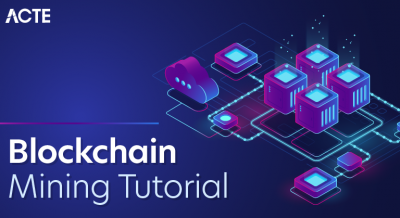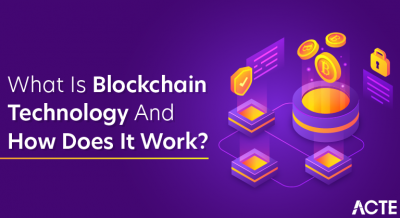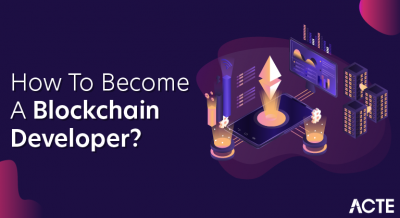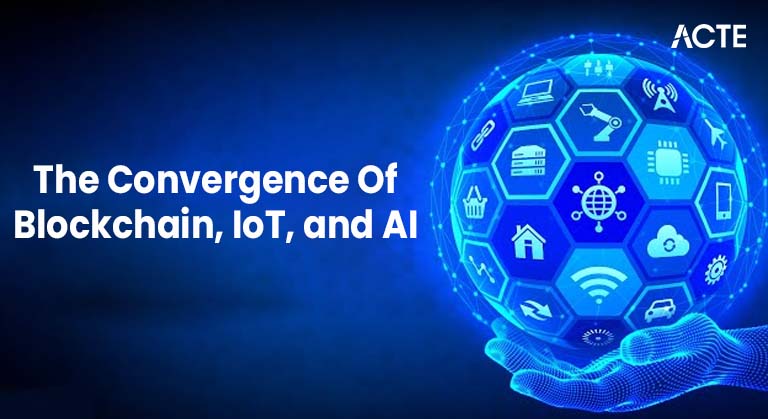
- Introduction
- Understanding the Three Pillars: Blockchain, IoT, and AI
- Why Converge? The Power of Integration
- How Blockchain Enhances IoT and AI
- Real-World Use Cases of the Convergence
- Challenges and Considerations
- Industry Impact Across Sectors
- Future Outlook and Emerging Trends
- Conclusion
Introduction
In the rapidly evolving landscape of technology, three groundbreaking innovations Blockchain, the Internet of Things (IoT), and Artificial Intelligence (AI) are transforming how businesses operate and how we interact with the digital world. Individually, each technology has immense potential. When combined, they unlock unprecedented opportunities for efficiency, security, The Power of Integration, Block Chain Training and automation.This convergence promises to revolutionize industries, Real-World Use Cases of the Convergence redefine data management, and enable smarter, more secure, and autonomous systems. In this blog, we’ll explore the synergy of blockchain, IoT, and AI, how they complement each other, and what the future holds for this powerful integration.
Understanding the Three Pillars: Blockchain, IoT, and AI
Blockchain
Blockchain is a decentralized, immutable ledger technology that records transactions across a network of computers. It ensures data integrity, transparency, The Power of Integration and security without relying on a central authority. Key features include cryptographic security, Blockchain Certification Training consensus protocols, and smart contracts that automate processes.

Internet of Things (IoT)
IoT refers to the network of physical devices embedded with sensors,The Power of Integration software, and connectivity that allows them to collect and exchange data. These “smart” devices range from home thermostats and wearable fitness trackers to industrial machinery and autonomous vehicles.
Artificial Intelligence (AI)
AI encompasses machine learning, natural language processing, and other technologies that enable machines to mimic human intelligence learning from data, recognizing patterns, making decisions, Real-World Use Cases of the Convergence and improving over time without explicit programming.
Interested in Obtaining Your Blockchain Certificate? View The Blockchain Training Course Offered By ACTE Right Now!
Why Converge? The Power of Integration
- IoT’s challenges: Security vulnerabilities, data privacy issues, and scalability concerns due to the massive volume of connected devices.
- Blockchain’s limitations: Scalability and data storage inefficiency make it less suited for handling raw IoT data.
- AI’s needs: High-quality, trustworthy, and verifiable data to make accurate decisions.
- Blockchain provides a secure, transparent backbone for IoT device data.
- IoT delivers real-time, granular data for AI analysis.
- AI enables intelligent automation and predictive insights from IoT data stored securely on blockchains.
- Blockchain can manage identities of millions of IoT devices securely, enabling encrypted, trusted communication without intermediaries.
- IoT devices generate massive streams of data. Storing cryptographic hashes or summaries of this data on the blockchain ensures data integrity and allows AI systems to verify the authenticity before analysis.
- Smart contracts automate actions based on AI insights and IoT data triggers. For example, a smart contract can execute payments when an IoT sensor What is Consortium Blockchain confirms delivery, all recorded on the blockchain.
- Blockchain can enable secure and transparent marketplaces where IoT device owners sell data to AI companies, with automated royalties via smart contracts.
- Permissioned blockchains can control who accesses IoT data, balancing transparency with privacy a crucial factor for AI models relying on sensitive data.
- Smart Cities: IoT sensors monitor traffic, pollution, energy use, and waste management. Blockchain secures the data, and AI optimizes city services like traffic flow and energy consumption.
- Supply Chain and Logistics: IoT devices track shipments and environmental conditions. Blockchain ensures transparent records, preventing fraud Block Chain Training and counterfeit products, while AI predicts demand and optimizes routes.
- Healthcare: Wearable IoT devices collect patient vitals. Blockchain secures patient data sharing with doctors, and AI analyzes trends for early disease detection and personalized treatment.
- Agriculture: Sensors monitor soil health and crop conditions. Blockchain records the data for traceability, and AI provides recommendations to improve yield and reduce resource waste.
- Autonomous Vehicles: Vehicles use IoT sensors to collect data. Blockchain provides secure vehicle-to-vehicle and vehicle-to-infrastructure communication, and AI makes driving decisions based on real-time data.
- Scalability Issues: Blockchain’s transaction throughput can be limited, and IoT devices generate massive volumes of data, requiring efficient data management strategies.
- Data Privacy and Compliance : Balancing transparency with privacy regulations like GDPR when combining IoT data and blockchain is complex What is Decentralized Finance .
- Interoperability: Different IoT devices and blockchain platforms may not easily communicate, requiring standardization.
- Energy Consumption: Blockchain networks, especially those using Proof of Work, consume significant energy, raising sustainability concerns.
- Complexity and Costs: Integrating three complex technologies involves substantial technical and financial investments.
- Finance: Blockchain secures financial transactions, IoT provides real-time asset tracking, and AI detects fraud and automates trading.
- Manufacturing: IoT sensors monitor equipment health. Blockchain ensures provenance of parts, and AI predicts maintenance needs.
- Retail: IoT tracks inventory, What is Cloud Mining blockchain provides transparent supplier records, and AI personalizes shopping experiences.
- Energy: IoT devices monitor consumption, blockchain enables peer-to-peer energy trading, and AI forecasts demand and optimizes grid operations.
- Edge Computing Integration: Processing data closer to IoT devices reduces latency and bandwidth, complementing blockchain and AI.
- AI-Driven Blockchain Protocols: AI may optimize blockchain consensus mechanisms for speed and efficiency.
- Quantum-Resistant Blockchain: Advances in quantum computing drive the development of blockchain systems resilient to quantum attacks.
- Enhanced Privacy Solutions: Techniques like Zero-Knowledge Proofs will allow secure data verification without revealing underlying information.
By converging these technologies, they compensate for each other’s weaknesses
Enhanced Trust and Security
The decentralized nature of blockchain reduces reliance on centralized servers vulnerable to hacking. IoT devices can use blockchain to authenticate Best Blockchain Programming Language themselves securely, ensuring data provenance and preventing tampering.
Data Integrity and Transparency
Blockchain’s immutable ledger records IoT data transactions, guaranteeing data has not been altered, which is critical for AI’s data-driven decisions.
To Earn Your Blockchain Certification, Gain Insights From Leading Blockchain Experts And Advance Your Career With ACTE’s Blockchain Training Course Today!
How Blockchain Enhances IoT and AI
Secure Device Authentication and Communication
Data Integrity and Provenance
Smart Contracts for Automation
Decentralized Data Marketplaces
Enhanced Privacy Through Encryption and Permissioning
Real-World Use Cases of the Convergence
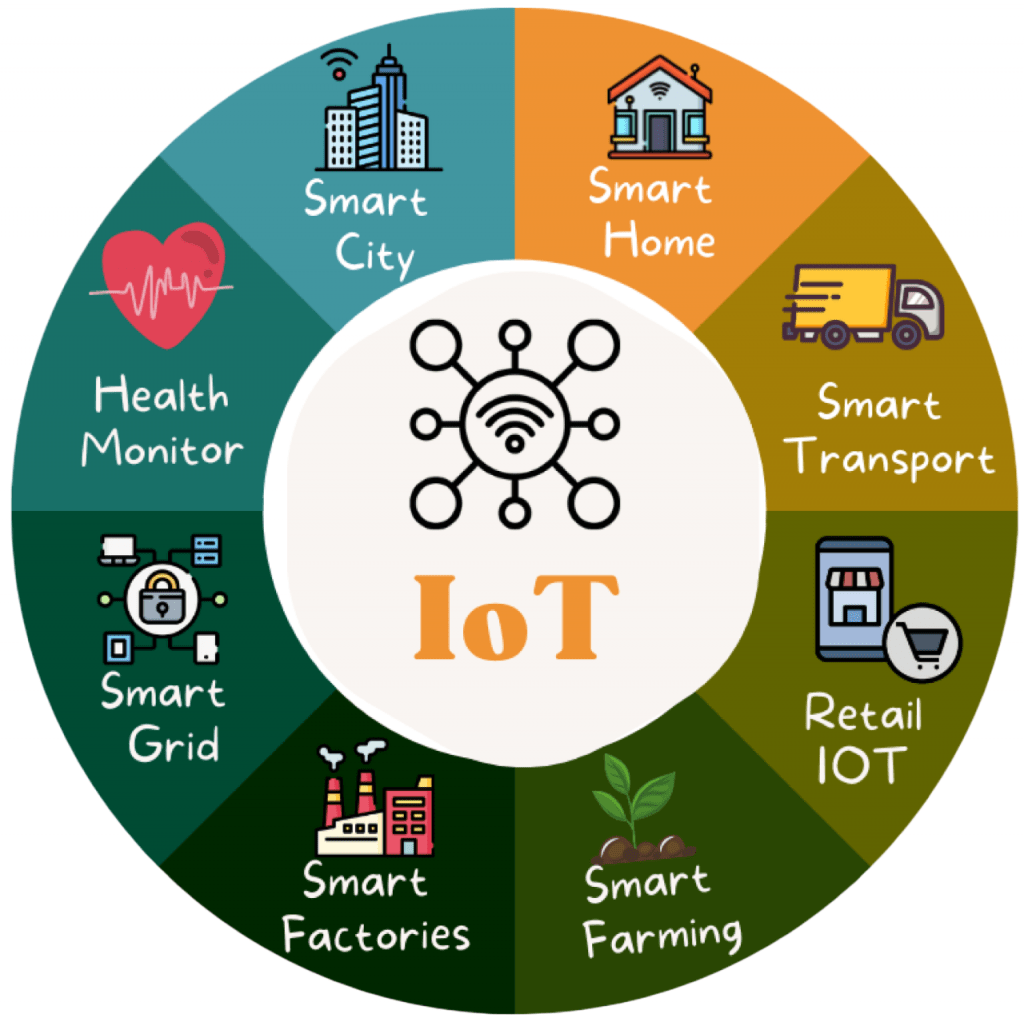
Challenges and Considerations
Preparing for a Blockchain Job Interview? Check Out Our Blog on Blockchain Interview Questions and Answers
Industry Impact Across Sectors
Future Outlook and Emerging Trends
Conclusion
The convergence of blockchain, IoT, and AI is a technological trifecta poised to redefine industries and reshape how we interact with the world. By combining security, data integrity, and intelligence, this integration offers solutions to long-standing challenges, Real-World Use Cases of the Convergence, enabling smarter, safer, and more efficient systems.While challenges like scalability , privacy, and integration remain, continued innovation and collaboration among technology stakeholders promise a future where blockchain, IoT, The Power of Integration and AI work seamlessly together unlocking new business models, empowering digital transformation, and driving the next wave of technological advancement.The convergence of Blockchain, IoT, and AI represents a transformative synergy that is redefining the future of technology across multiple industries. Block Chain Training By integrating the decentralized security and transparency of blockchain with the data-rich environments of IoT and the analytical power of AI, organizations can unlock unprecedented efficiencies, enhance decision-making, and build more resilient systems. While challenges such as scalability, privacy, and interoperability remain, ongoing advancements and collaborative efforts are paving the way for widespread adoption. As these technologies continue to evolve and merge, their combined potential promises to drive innovation, improve operational intelligence, and create smarter, more connected ecosystems that benefit businesses and society alike.


